Focusrite ISA 428 PrePack 4-Channel Preamplifier withDigital ADAT Card
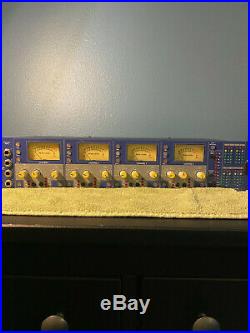
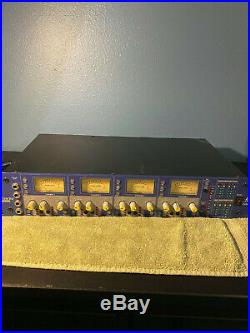
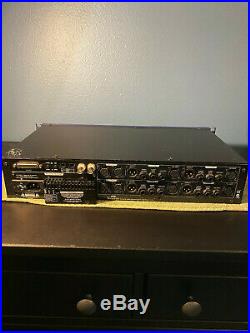

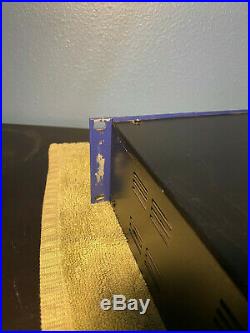
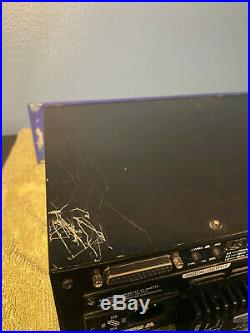
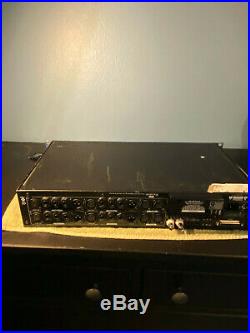
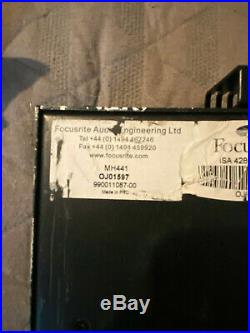

A very complete review from Sound On Sound Magazine. Focusrite's new preamp offers variable input impedance and an optional multi-channel A-D converter board. The ever-expanding Focusrite range of preamps has just been swelled further with the arrival of the new ISA428 Pre Pack.
This is a surprisingly heavy (7kg) rackmount affair which occupies 2U of rack space and extends roughly 250mm behind the front panel. The case is painted black, while the front panel is finished in the classic Focusrite blue colour scheme with grey control sections, yellow knob caps and plenty of LEDs.
Dominating the front panel, though, are four moving-coil meters which have been designed with a very fast reaction time and a slow decay to provide an almost peak-reading ballistic, and these show the available headroom. The meters are scaled from -26dB to +2dB with the 0dB point equating to +22dBu at the analogue outputs. An overload LED built into each meter flashes when the signal exceeds this level, although the analogue circuitry actually clips 6dB higher at around +28dBu. The 0dB meter level also equates to the maximum input level for the optional A-D converter card.Each of the four preamp channels is equipped identically and the rear panel bestows each with a balanced mic input XLR socket, a balanced line input TRS socket, a further pair of balanced TRS sockets to provide an insert send and return, and an XLR to carry the balanced channel line output. In addition, the front panel carries four more quarter-inch sockets which accept unbalanced DI instrument inputs, one for each channel. The impedance of these instrument inputs is over 1M.
Moving on to the channel controls now, three illuminated buttons arrayed to the left of each channel's meter engage phantom power, activate a polarity inversion and enable the insert return. Below the meter is one rotary switch and a pair of continuous rotary controls. The switch sets the coarse gain, with the range depending on whether the mic or line input is selected, and another illuminated button increases the gain of the mic amp by a further 30dB. The course gain can be set in 10dB steps from zero to 60dB for the mic input, and from -20dB to +10dB for the line input. To allow finer adjustment of the gain, a continuously variable Trim control provides additional gain from zero to +20dB.
The combination of maximum course and fine gain settings therefore provides a whopping 80dB of mic gain! Beneath the Trim control another button toggles through the three input options mic, line and instrument with LEDs to indicate the current selection. With the instrument input selected, the coarse gain control becomes inactive and the Trim control adopts an alternative gain structure which spans +10dB to +40dB.
A second button below the Trim control provides one of the more unusual facilities of the ISA428 a variable input impedance for the microphone stage. Changing the loading here affects different mics in different ways and is somewhat unpredictable, but adds to the range of tonal colours which can be obtained without resorting to EQ or dynamics. In general, the higher impedance settings tend to provide more signal level and a more open and slightly smoother sound, while lower settings tend to emphasise frequency response peaks and reduce the signal level from the microphone.
The button cycles through four options: Low (600); ISA110 (1400); Medium (2400); and High (6800). These different impedance values are obtained by selecting different taps on the microphone input transformer. The microphone preamp circuitry is the same Rupert Neve design developed for the original Focusrite consoles and the early ISA110 modules. Unlike many of Mr Neve's more recent transformerless designs, this circuit uses a microphone input transformer which provides 20dB of the entire stage gain. The specifications suggest a low noise floor (EIN of -128dBu at 60dB gain with a 150 terminating impedance) and a typically very wide bandwidth (-3dB at 30Hz and 120kHz). The final channel control is a variable high-pass filter with a usefully steep 18dB/octave slope. The corner frequency can be set anywhere from 16Hz to 420Hz and there is a Filter In button to engage or bypass the filter so that its effect on the material can be easily auditioned.[Note: This unit for sale does have this A-D Converter]. Although the ISA428 is available as a straightforward four-channel analogue-only unit, I suspect many purchasers will also choose the optional eight-channel analogue-to-digital converter card, since this adds considerably to the functionality of the unit with a relatively small financial penalty. Analogue-only units can be field-upgraded at any time by simply purchasing the converter card and plugging it in a simple five-minute DIY operation.
It may initially seem odd having an eight-channel A-D card in a four-channel unit, but there is some sense in the madness! Many multi-channel digital interfaces work in eight-channel blocks (such as the ADAT interface), and the ISA428 makes the'spare' channels of A-D conversion available for four analogue line-level inputs, allowing the ISA428 to serve as an eight-channel interface for a DAW or digital recorder.For those who require eight mic inputs to a digital system, all you need is a second ISA428 and some XLR patch cables to hook the line outputs of the first unit to the line inputs of the second unit's converter card. The four ISA428 preamp channels are routed through the first four digital outputs, while channels five to eight are used to encode four external fixed-level balanced analogue line inputs via dedicated XLRs on the rear panel. The input sensitivity for these line-level inputs is set such that a +4dBu input corresponds to -18dBFS on the digital output (and 0dBFS equates to +22dBu). The digital outputs are presented on duplicated ADAT lightpipe ports and two D-Sub connectors carrying AES-EBU or S/PDIF data streams.
There are no TDIF facilities. I skipped over the right-hand side of the ISA428 front panel earlier, because the controls located there are only operational if the converter card is installed. This section comprises four buttons and two rows of four bar-graph meters which show the digital output levels of all eight A-D channels. If the card is not installed, the top row of bar-graph meters are used to display the analogue output levels of the four channels instead.
Once again, the 0dBFS LED corresponds to +22dBu on the analogue output, and the -18dBFS lamp equates to +4dBu. Three of the four further buttons have associated LEDs to indicate their status, while the fourth is an illuminated button. The bottom button selects the word-clock source for the A-D card; the options being external word clock or an external 256x Super Clock. Each mode is indicated by an LED, while a third illuminates when the unit's clock is stable and locked.The converter card carries a pair of BNC sockets on the rear panel. One accepts an external word clock or Super Clock, and the other outputs the machine's own word clock.
The next button selects the A-D output bit depth with options for 24, 20 and 16 bits. It is nice to have the comprehensive range here which allows the ISA428 to be used with a wide range of current, future and, more importantly, legacy equipment. A lot of converters seem to omit the lower resolutions these days, restricting the equipment with which they can be used.
The third button selects sampling frequency, with all the standard rates from 44.1kHz right the way up to 192kHz, each with its own indicator LED. While standard and double-speed rates are in common use, the quad rates are still relatively rare, Pro Tools HD being one of the better-known DAWs to offer this facility. Not all digital interfaces can accommodate such high rates, and various bit-splitting and sample-splitting modes have to be used, of which more in a moment. The final button in this section engages a soft limiter across all eight A-D channels. This is based on an opto-limiter circuit and is intended to prevent digital peak overloads by progressively increasing the compression ratio over the last 6dB.The compression starts at 1.5:1 between -6dBFS and -4dBFS, progressing on to 2:1 for the next four decibels and to infinity:1 for anything over. Thus it is impossible to overload the A-D converter input.
The digital outputs are presented on a pair of ADAT lightpipe sockets and a pair of nine-pin D-Sub sockets which carry AES and S/PDIF signals a couple of buttons adjacent to these sockets reconfigure their operating modes. When operating with 44.1kHz and 48kHz sample rates, both ADAT lightpipe ports carry all eight channels simultaneously, and can be used to feed two eight-track recorders, for example. At 88.2kHz and 96kHz sample rates these ADAT ports cannot carry eight channels of high-rate data, and so are automatically switched to operate in the standard SMUX mode, where the first port conveys the first four channels and the second carries the remainder. There is no standard for ADAT lightpipe interfaces at 176.4kHz or 192kHz sample rates, and so these outputs are muted when these rates are selected.
The two nine-pin D-Sub sockets are intended to output AES data, although the first socket can be switched with a small button to carry S/PDIF data instead. The second D-Sub connector always outputs AES signals. Unfortunately, Focusrite didn't supply one with the review machine either, so I was unable to test the AES ports or the 192kHz sample-rate modes. A second button located between the two D-Sub ports selects either single- or dual-wire operation when working at elevated sample rates.In the single-wire mode each connector outputs all eight channels at any sample rate up to 192kHz. However, not all equipment is capable of working with such high-speed data and some requires the data to be distributed across two cables, thereby halving the raw data rate.
Since a lot of users will probably acquire the ISA428 to use with a Pro Tools HD system, it is worth noting that the latter employs the single-wire AES mode for sample rates up to 96kHz, and the dual-wire mode for sample rates over 96kHz. The item "Focusrite ISA 428 PrePack 4-Channel Preamplifier withDigital ADAT Card" is in sale since Friday, March 6, 2020. This item is in the category "Musical Instruments & Gear\Pro Audio Equipment\Preamps & Channel Strips". The seller is "folkdawg" and is located in Clearwater, Florida.This item can be shipped to United States.
- Number of Channels: 8
- Model: ISA428 PrePack
- Type: Microphone Preamp
- Features: Digital Output
- Brand: Focusrite
